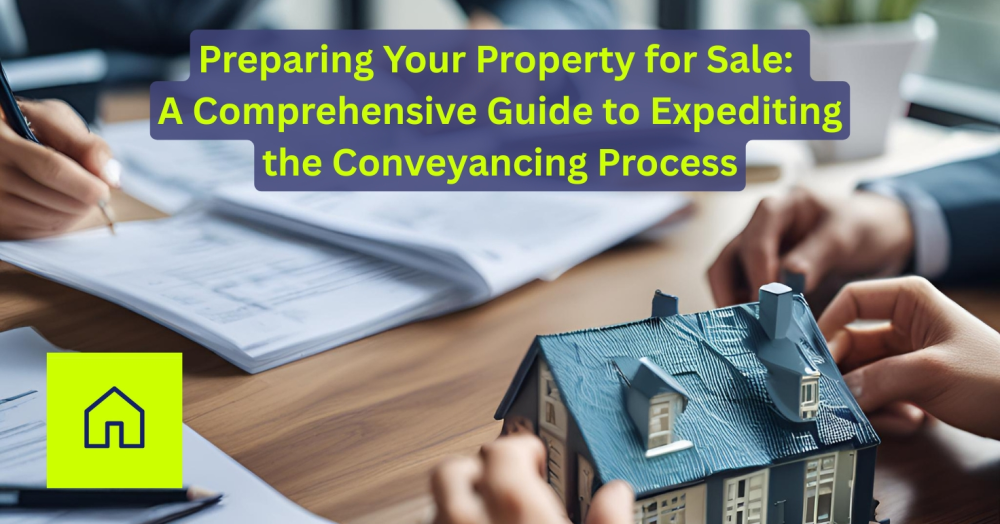
Preparing Your Property for Sale: A Comprehensive Guide to Expediting the Conveyancing Process
As estate agents, we understand that a smooth and swift property sale is paramount for our clients. One of the most common bottlenecks in the sales timeline is often the conveyancing process. However, by taking proactive steps before your property even goes on the market, you can lay the groundwork for an exceptional service experience and a much quicker completion.
Understanding the Conveyancing Process
Conveyancing is the legal and administrative work required to transfer ownership of land or buildings from one person to another. It involves numerous checks, searches, and the exchange of contracts. Delays often arise from missing documentation, unanswered queries, or issues uncovered during searches. Our aim is to help you minimise these.
Step 1: Gather Essential Documentation Early
The conveyancer will require a significant amount of paperwork. Starting to gather these documents well in advance can save weeks. Here’s a checklist of what to prepare:
- Proof of Identity and Address: Your conveyancer will need this for anti-money laundering regulations.
- Title Deeds: If you have physical copies, locate them. Otherwise, your conveyancer can obtain them from the Land Registry.
- Energy Performance Certificate (EPC): This is legally required before marketing your property. Ensure yours is up-to-date and valid. If not, arrange for a new one immediately.
- Fittings and Contents Form (TA10): This details what items are included or excluded from the sale.
- Property Information Form (TA6): This comprehensive form covers everything from boundaries and disputes to services and guarantees. Completing this accurately and thoroughly is crucial.
- Leasehold Information (if applicable): If your property is leasehold, gather the lease document, service charge accounts, ground rent statements, and contact details for the freeholder/management company.
- Building Regulations Certificates: For any significant alterations or extensions (e.g., loft conversions, new boilers, replacement windows), you'll need FENSA certificates, Gas Safe certificates, or local authority building control completion certificates.
- Planning Permissions: For any extensions or major structural changes.
- Guarantees and Warranties: For damp proofing, timber treatment, new roofs, or appliances included in the sale.
- Mortgage Details: Your current mortgage provider's details.
Step 2: Address Potential Issues Proactively
Foreseeing and resolving potential issues before they become problems for your buyer’s conveyancer can dramatically speed things up.
- Boundary Disputes: If there have ever been disagreements over boundaries, gather any relevant correspondence or agreements.
- Shared Access/Drives: Ensure any formal agreements or easements are documented.
- Rights of Way: Clarify any public or private rights of way affecting your property.
- Maintenance Issues: Consider addressing minor repairs or maintenance issues that might be flagged in a buyer's survey. While not strictly conveyancing, a clean survey can prevent renegotiations and delays.
- Japanese Knotweed: If present, ensure you have a professional treatment plan and guarantee in place.
Step 3: Instruct a Conveyancer Early
You don't have to wait until you have an offer to instruct a conveyancer. Engaging them early allows them to begin preparing the contract pack, order searches, and raise initial enquiries. This 'ready-to-go' approach means that once an offer is accepted, the legal process can commence almost immediately.
Step 4: Maintain Clear Communication
Once the conveyancing process is underway, respond promptly to all queries from your conveyancer. Delays in providing information or signing documents are a frequent cause of hold-ups. Keep your estate agent informed of any developments, as they can often help facilitate communication between parties.
Step 5: Be Realistic and Patient
While preparation can significantly speed up the process, some elements are beyond your control, such as local authority search times or the speed of other parties in the chain. However, by following these steps, you demonstrate a commitment to a smooth transaction, which can be reassuring for buyers and their legal teams.
By adopting this technical yet friendly approach to preparing your property for sale, you're not just selling a house; you're providing an exceptional service experience. Our trusted advice aims to empower you to navigate the complexities of property sales with confidence, ensuring a more efficient and less stressful journey to completion.


